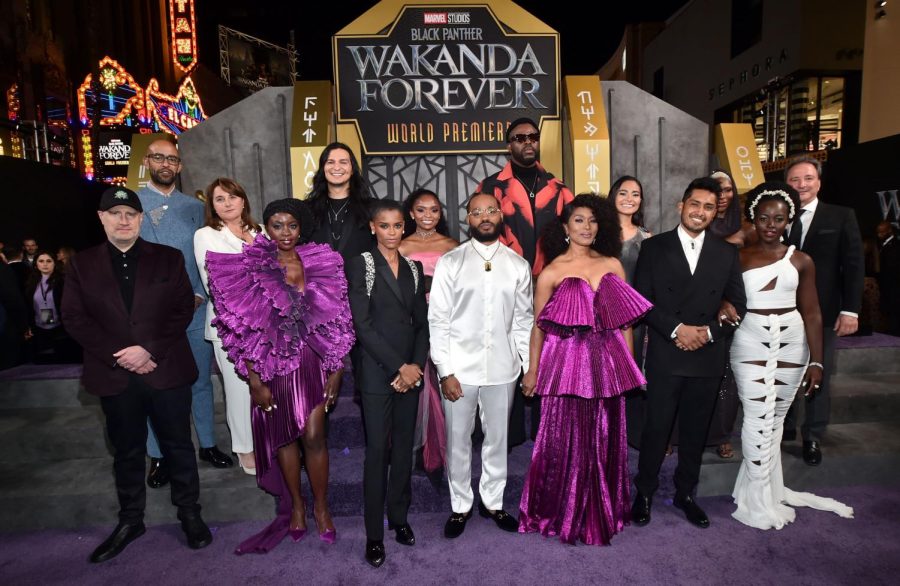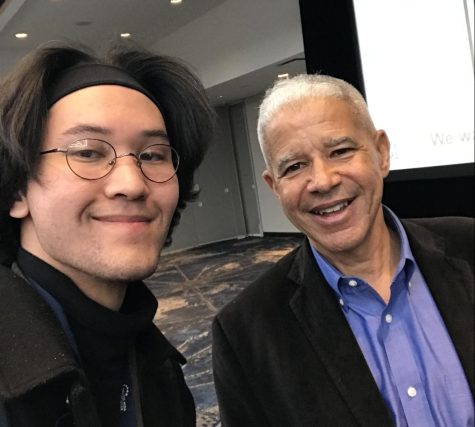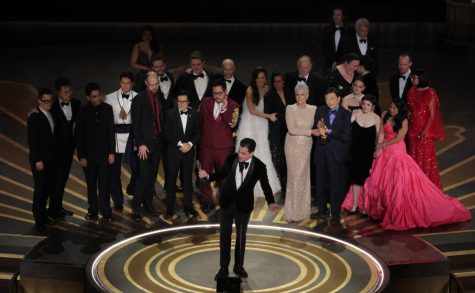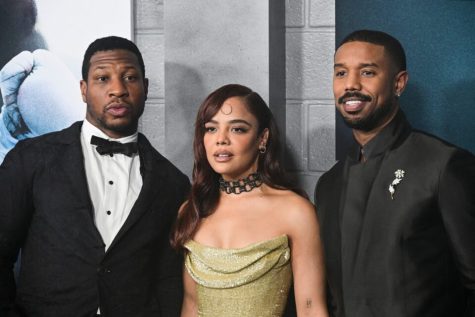A Legendary Tribute, Black Panther: Wakanda Forever
Director from the East Bay honors Chadwick Boseman in this thrilling sequel
November 18, 2022
Director from the East Bay honors Chadwick Boseman in this thrilling sequel. Minor Spoilers
For friends, fans, and family of Chadwick Boseman, Marvel’s “Black Panther: Wakanda Forever” pays a stirring tribute to the late actor.
The highly anticipated sequel is led by Shuri — played by Letitia Wright — who is grieving the loss of her brother, King T’Challa, after succumbing to an illness in secret, drawing parallels to the conditions of Boseman’s passing.
Cooglar pulls at the fans’ heartstrings with a touching narrative of loss and grief, improved visual CGI, and captivating sound design.
The Director: Oakland to Sacramento
Director Ryan Coogler was born and raised in the East Bay, hailing from Oakland, California. During his college years, Coogler discovered his aspirations toward filmmaking while playing as a wide receiver for the Sacramento State Hornets football team.
In an interview titled “Made at Sac State: Ryan Coogler, Filmmaker,” Coogler states “Being a member of a team and everybody moving toward that goal coming from different backgrounds, Sacramento State [University] absolutely helped me define where I wanted to go,” crediting his professors at the university, for inspiring him to pursue film and for the success of his award-winning debut film “Fruitvale Station” (2013).
Since finding initial success through Fruitvale Station, Coogler’s works — such as the “Creed” franchise and “Black Panther” (2018) — have been nationally recognized and nominated for countless awards, but it seems that Black Panther: Wakanda Forever (2022) could finally be the piece that gets him an Academy Award.
The King: Loss & Grieving
Chadwick Boseman passed away from stage 4 colon cancer at his home in Los Angeles on Aug. 28, 2020. Boseman’s death shocked millions due to the beloved actor’s silence on his medical condition.
Boseman’s publicist soon released a scant statement, informing the public that Boseman’s wife, Taylor Simone Ledward and his family were with him at the time of the actor’s passing. A post was made to Boseman’s Instagram account, disclosing that the Marvel actor’s colon cancer has advanced from stage 3 to stage 4 in 2016.
Meanwhile, Boseman continued his prolific career in film despite the 2016 diagnosis, taking part in the production of Message from the King (2016), Marshall (2017), Black Panther (2018), 21 Bridges (2019), Da 5 Bloods (2020), Ma Rainey’s Black Bottom (2020), and his final work as T’Challa in Marvel’s “What If…?” (2021) series.
Inspiring many through the years, Boseman has become an esteemed actor and a cherished figure within the African-American community.
Aside from his career in film, Boseman was an ardent activist, famously advocating for equal pay due to his co-star, Sienna Miller, receiving less pay for their work in “21 Bridges.” Boseman supported and represented the “All Black Lives Matter” movement and his final tweet was in support of Kamala Harris for the election of Vice President..
Through his work, Chadwick has become a staple in the film industry, using his leverage to represent African-American culture. As an icon to his community, Boseman’s performance as the Black Panther — the first mainstream Black superhero — presented a symbol of hope for future representation of minorities in Hollywood.
Boseman’s legacy lives on through the franchise, as the Black Panther sequel pays homage and respects to the renowned actor.
The Black Panther: Wakanda Forever
“Black Panther: Wakanda Forever” (2022) begins with a panicked Shuri, struggling to accept her brother’s passing as she was unable to produce a cure for T’Challa’s illness.
The funeral scene of the King allows audiences to grieve and say goodbye both to King T’Challa & Chadwick Boseman.
While the Marvel Studios logo is normally stitched together with a compilation of moments from their previous films, the sequel instead honors Chadwick Boseman by showcasing moments of his work in the Marvel Cinematic Universe.
After the audience is given time to process T’Challa’s passing, the movie thrusts itself into the present. Queen Ramonda, played by Angela Bassett, stands before a jury for questioning by U.S. Nations and the French Government on account of their hesitation to produce and trade vibranium — a metal found to have technologically advanced capabilities. Bringing us our first act of the film, the audience witness Wakandans defend their vibranium back home and watch Queen Ramonda defend Wakanda against the foreign powers.
Tenoch Huerta’s character and the leader of an advanced nation, “Namor” introduces a major conflict plot point. Namor is the first mutant in Marvel Comics, making this a very momentous introduction for long-time Marvel fans. Namor enters the scene menacingly, interrupting Queen Ramonda and Shuri as they mourn, and instead demand their obedience.
Letitia Wright, Angela Bassett, Danai Gurira, and Lupita Nyong’o make an excellent main cast; providing compelling performances while still handling their grief over Boseman’s passing. With the inclusion of Dominique Thorne’s character, Ironheart — a child prodigy to the likes of Tony Stark — Thorne brings a charismatic breath of fresh air to the otherwise heavy film.
Through screenplay, Coogler conveys an interesting narrative by providing insight into the characters’ grieving process, as Princess Nakia — played by Lupita Nyong’o — returns and expresses her remorse and longing for T’Challa. These scenes provide opportunities for audiences to see the actor’s genuine reactions as well; knowing that they are truly grieving their friend, adds to the emotion.
In comparison to the jarring effects of the first film, the CGI appears to have improved in the sequel, shattering expectations through their display of the hidden, atlantic-like nation, Taloka. The fight scenes are well-choreographed combinations of practical and visual effects, making the viewing experience both captivating and threatening. Even some angles allow viewers to experience the action in time with the camera as it follows the characters through hand-held tracking.
Additionally, the film masterfully combines the beautiful soundtrack with the sound design of the film. While introducing the people of Talokan, the score of the scene intensifies as the background music seemingly increases, to become a vital part of the scene. The guards are seen reacting to the noise of singing that is daunting and reminiscent of the mythical creatures known as “sirens.”
By combining the soundtrack with a prevalent myth to date, Coogler makes the people of Talokan feel real and as frightening as that is, it is also impressive.
Indulging viewers into the vast locations of Wakanda and Talokan through impressive storytelling, impeccable visual effects, and memorable sound design, “Black Panther: Wakanda Forever” serves as the perfect send-off, allowing fans and cast members the opportunity to mourn the loss of their beloved King, T’Challa, Chadwick Boseman while still honoring all the empowerment and comfort he brought to audiences around the world.

















